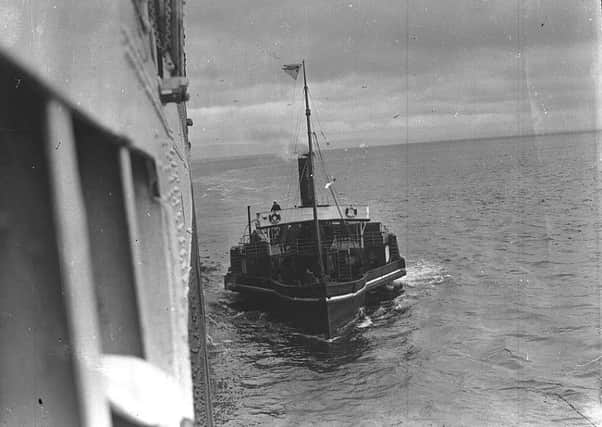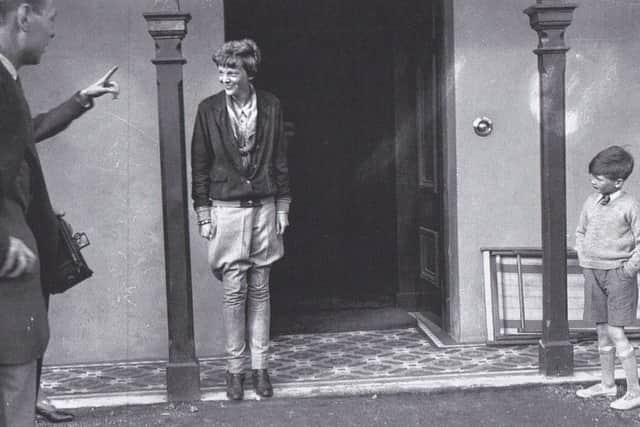‘Contentious border spelt hardship for Derry between the world wars’


As the 1926 census for NI was used for waste paper in World War II the first census that survives for the city and county of Derry, since 1911, is that of 1937 and this will be available for inspection in the year 2038 (unless the 100 year closure rule is waived before then). This means that each annual edition of the Derry Almanac is the closest surviving census document for Derry city in the period from 1912 to 1936. From 1868 right through to 1949 inclusive each annual edition of the Derry Almanac and Directory contained a ‘Street Directory’ where heads of households were identified against their street address in Derry city. The recording of house numbers, against each householder, first appeared in the Almanac of 1897.
Economic Crisis
‘During the two years following the end of the First World War [1918], Derry moved brusquely from a peak of unprecedented prosperity to an economic crisis of equally unprecedented proportions.’ (Robert Gavin, Atlantic Gateway: The port and city of Londonderry since 1700, p. 179)


Advertisement
Hide AdAdvertisement
Hide AdRationalisation and restructuring within the UK economy and adoption of protectionism, with introduction of trade barriers, outside the UK, together with Derry’s peripheral location on a contentious border, created by partition of 1921, spelt economic hardship for Derry and the NW for the remainder of the inter-war years. Derry’s manufacturing base really suffered. In 1922, the future of shipbuilding in Derry looked secure; the workforce stood at 2,600 and the yard had the third largest output in Ireland. Yet by 1924 the yard was closed, and it never re-opened.
The closures of Watt’s Distillery in October 1921 and of the Foyle Shipyard in October 1924, two significant employers of men in the city, left a struggling clothing industry as by far the dominant industry in the city. The clothing industry also faced a crisis with collapse of shirt orders in 1920 and 1921; the workforce that had stood at around 8,000 in 1919, numbered only 4,500 in 1924. By 1924, however, the shirt industry had recovered and achieved a stability it was able to maintain through the rest of the inter-war years.
Partition, and the imposition of protective tariffs, resulted in the collapse of cross-border trade. Much of the cross-channel goods imported through Derry quay were destined for Donegal via the city’s substantial retail and wholesale network. Shirt exports across the land border plummeted. In 1923, Derry’s biscuit manufacturers were selling large volumes of biscuits throughout Ireland. In 1924, duties on biscuits were imposed and, by 1926, Derry’s biscuit manufacturers were working at a third of their capacity.
From full employment in 1918, an unemployment rate of almost 30% was being experienced in the city by the mid-1920s.
transatlantic hub
Advertisement
Hide AdAdvertisement
Hide AdDerry, however, still retained its maritime importance as both a gateway to North West Ireland and as a corridor across the Atlantic linking Western Europe with North America.
The city retained its position as a premier emigration port in Ireland. In Derry Almanac of 1930, the Anchor Line were promoting their ‘Londonderry & Belfast to New York’ service on their ‘New Oil-Burning Liners “California,” “Caledonia,” “Cameronia,” “Tuscania,” “Transylvania,” – all 16,700 Tons’; and the Anchor-Donaldson Line their ‘Londonderry and Belfast to Canada’ service which sailed ‘in Summer to Quebec and Montreal; in Winter to Halifax and St. John, N.B., or Portland, Maine’.
In the inter-war years, Derry was also centre stage in two big trans-Atlantic news stories that captured the world’s imagination. On Saturday 21 May 1932, Amelia Earhart, the first women to fly the Atlantic solo, landed her plane Friendship – a Lockheed Vega aircraft – at Robert Gallagher’s farm at Springfield. On Sunday, July 2, 1933, an Italian squadron of 24 seaplanes, led by General Italo Balbo, arrived at Derry, to a rousing reception from crowds of spectators lining the quays, on the second stage of their journey to attend Chicago’s World Fair.